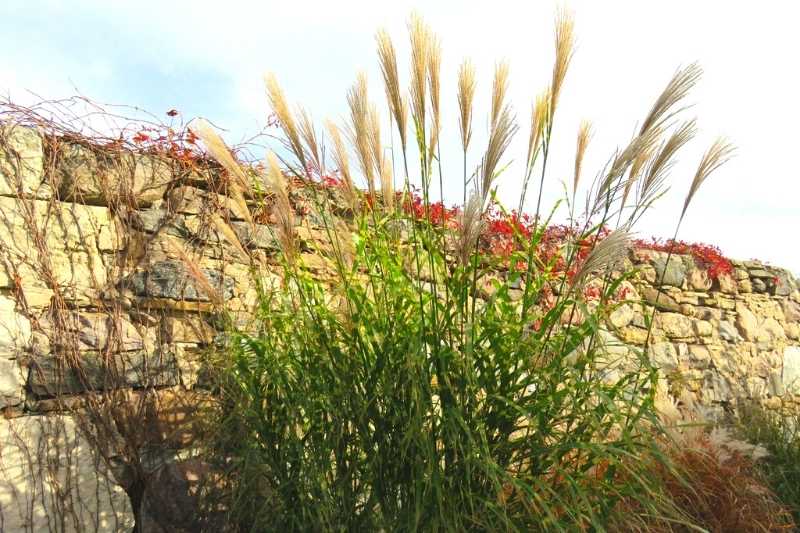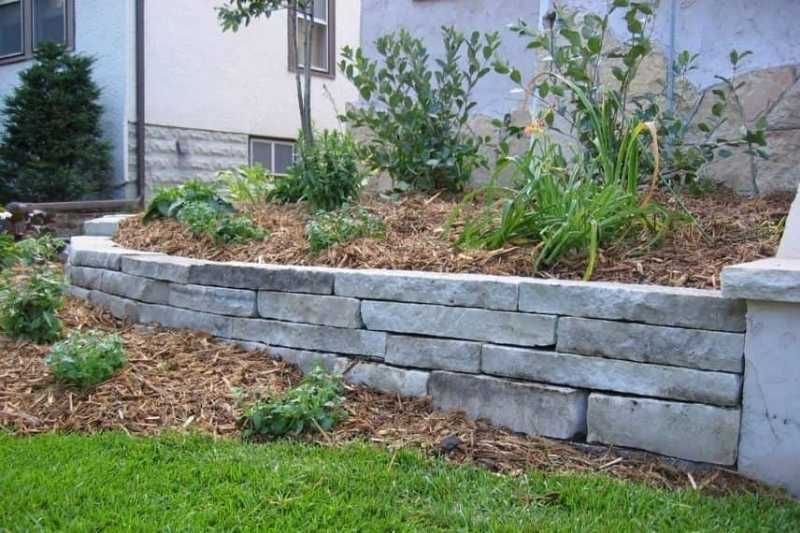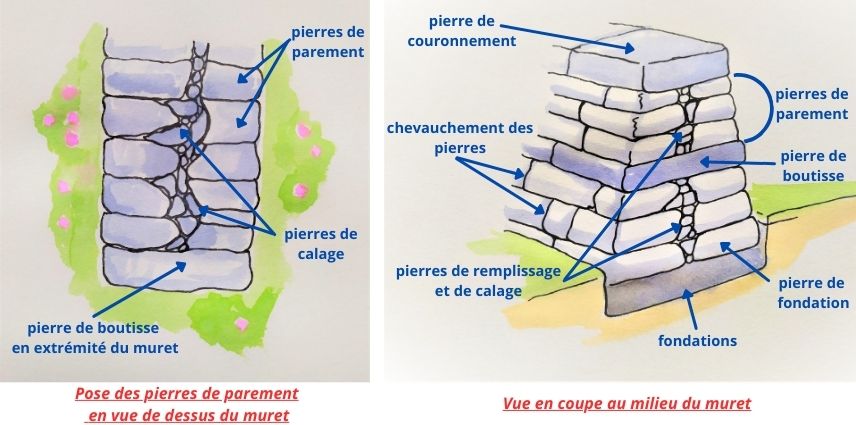Dry stone walls are walls built solely using stones, without any mortar or cement. This is an ancient, millennia-old technique. In the past, they were often used to demarcate fields or pathways. Traditionally, stones gathered from fields that hindered cultivation were used. While constructing a dry stone wall may seem straightforward at first glance, it actually requires precision and patience to ensure your structure is durable and sturdy. Discover our step-by-step guide to building a dry stone wall:
Why build a wall without cement?
Today, these walls are still used and enhance our gardens with their natural and robust appearance. Decorative, the dry stone wall also helps demarcate a space or partition a vegetable garden. Dry stone walls are long-lasting, and the stones can be reused if dismantled. Eco-friendly, they utilise natural resources without relying on high-carbon construction materials like cement—especially if the stones are reclaimed. They also serve as ecological niches for ecosystems: amphibians, insects, small reptiles, and gastropods find refuge here... Perfect for welcoming and attracting garden helpers!

Which stones are suitable for a dry stone wall?
To build a dry stone wall, you will need stones with one or, ideally, several flat faces. The more flat faces they have, the easier your wall will be to construct. The stones should not be crumbly or rounded. You can use limestone, granite, etc. If you opt for striated stones like slate, ensure the striations run horizontally. Finally, you can also reclaim stones from a field (with the owner's permission) or from demolition sites or old structures.

How to start building a dry stone wall?
What height and width should a dry stone wall be?
First, decide on the height of your wall. The width should be at least one-third of the wall's height, never less than 30 cm. For added stability, the sides of your wall should slope at around 10% (approximately 4°)—factor this into the base width. Equip yourself with safety gear: protective shoes and gloves.
Preparing the ground
- Mark out the location of your future wall using string lines. Note that the sides of your wall should slope at 10% (approximately 4°) for better stability.
- Excavate your short grass meadow or ground to a depth of 20–30 cm. The foundation should be 5 cm wider than the base of the wall on each side. For example: for a wall with a 40 cm base width, the foundation should be 50 cm wide (40 cm wall width + 5 cm + 5 cm = 50 cm foundation width).
- Your trench should be level, and the ground well-compacted using a roller.
- Pour gravel or hardcore into the trench for drainage. Compact it thoroughly with a roller to create a level, solid drainage layer.

Preparing the stones
Sort the stones. This step will save time when assembling your wall:
- Use small stones for packing or drainage to fill the interior of the wall;
- Use medium-sized stones for the facing;
- Use the largest stones for the first foundation row and the top row, called the coping.
Steps for constructing the wall
Laying the first row of stones
- Select the largest stones.
- Place them side by side, flat faces down. The longest side should always run into the wall's thickness.
They must form a level row and be perfectly stable. They should not move at all. If they do, use packing stones. - Fill gaps with small stones.
Building the facing rows of the wall
- Use medium-sized stones.
- Place each stone flat face down. Always position stones straddling those below—one stone over two stones. The longest side should always run into the wall's thickness. They must form a level row and be perfectly stable. They should not move at all. If they do, use packing stones.
- Fill gaps with small stones.
- If your wall exceeds 50 cm in height, you must, halfway up, place throughstones: long stones spanning the wall's width. These ensure stability. Space them regularly (e.g., every 70 cm). Place throughstones every 50 cm of wall height.
Laying the final row of stones: the coping
Use the largest stones. Their weight will stabilise the structure. They must be perfectly stable and span the wall's width.

What mistakes should you avoid when building a dry stone wall?
- Avoid placing packing stones on the edges or at the wall's end! Over time, these could shift.
- Do not pack stones with soil—rainwater will wash it away, destabilising your structure.
Which plants can decorate my wall?
You can adorn your wall with climbing plants like jasmine, ivy, climbing roses, and more—find them in our climbing plants selection. Rockery perennials are ideal for decorating the base of your wall, or even nestling into gaps. Annual climbing flowers, like morning glories or nasturtiums, will effortlessly decorate your wall.
For more, explore our guides: flowering a wall and 10 perennials for wall decoration.
Further reading:
- Discover our selection of 10 easy climbing flowers for instant decoration
- Learn how to create a herb spiral
- Explore our climbing plants for walls and façades
- A garden wall: our ideas for dressing it up
































Comments